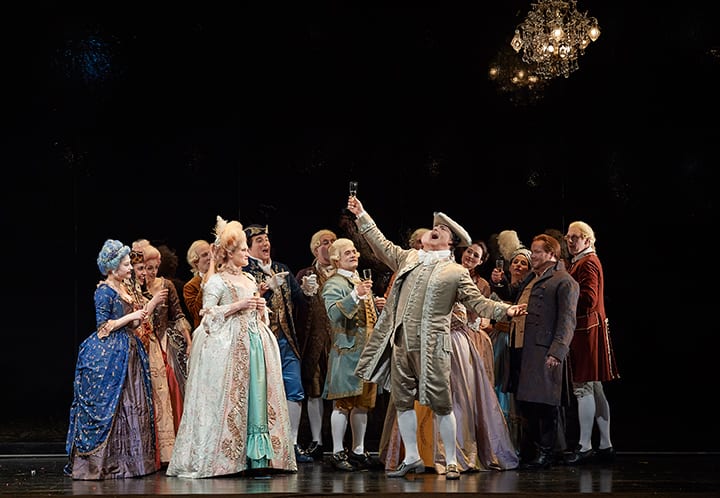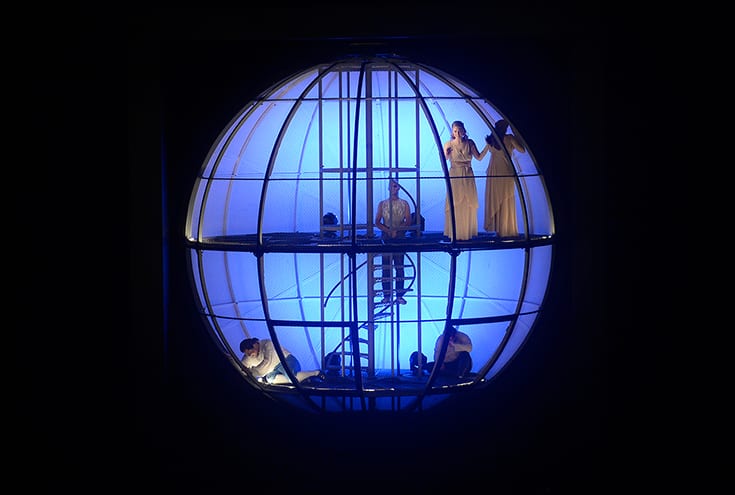The COCs new production of Mozart’s The Abduction from the Seraglio attempts much, but delivers little. The production, at first glance, seems replete with all sorts of radical political and social subtexts, but sadly, these attempts at revisionist narratives ultimately leave its audience more confused than edified at the end of this 3.5-hour marathon.
This production, directed by Lebanese-Canadian Wajdi Mouawad, makes many a radical political gesture, but it ultimately fails to revise the Orientalist narratives on race and gender that were the hallmarks of the original work. Much like the COC’s Canada 150 revival of Harry Somer’s Louis Riel (which similarly missed its mark), The Abduction was clearly programmed to speak truth to power through art. The directorial choices made by Mouawad are intended to resonate with our contemporary cultural climate of feminist empowerment characterized by the #TimesUp and #MeToo movements. The problem, however, is that Mouawad’s artistic choices don’t translate into a coherent revisionist narrative that works against the east/west, male/female polarities of the work.
Most striking among the inconsistencies of tonight’s performance were the reconstituted dialogues that deliver the plot between arias and choruses. The text of these interactions was painfully didactic on issues of female agency, and yet curiously circumspect on the issue of racial inequity.

Likewise, strange aesthetic choices left the audience attempting to grasp at some thread of coherence that connected set and costume design to Mouawad’s political message. Why, for example, were the Europeans dressed in opulent 18th-century silks, while the janissaries of Pasha Selim’s court were made to look like caricatures of holocaust survivors, and the Pasha and his men like undertakers in ill-fitting kaftans?
Mouawad’s directorial note seems to address this divide by describing the action as taking place in two timelines — in a “present” that unfolds during a party in 18th century France, and a “past” that is an imagined reconstruction of the Pasha’s court. However, the incredibly drab and impoverished costume design used for the Turkish court seems to be directly at odds with the idea that somehow, as representative of the “East,” this civilization was elegant, refined, and altruistic in ways the “West” could not conceive.

The set design, which consisted of a monolithic sphere contained in a square that shifted its confines, took centre stage and pointed to a symbolic “squaring of the circle,” an ancient symbol for the unity of opposites. But the device proved an oppressive presence through the entire opera and felt at odds with the message of unified polarities when the central sphere was revealed to be simultaneously the Pasha’s seraglio and jail.
While we were treated to delightful performances by Jane Archibald and Claire de Sévigné, as Konstanze and Blonde respectively, and an outstandingly dramatic Osmin by Goran Juríc, the music, sadly, did not deliver, as the often soupy orchestral strings muddied the crisp coloratura singing from Archibald. The Abduction of the Seraglio does not give us a later Mozart’s powerful dramatic mirroring of the plot through music—this was even more painfully apparent when the dynamic range of the orchestra never strayed far from mediocre in a story meant to be about passionate desires of all kinds.
Toronto has an opera audience spoiled with exceptionally fine Baroque opera thanks to the collaboration between Opera Atelier and Tafelmusik. One can only hope that when the COC takes on opera by Mozart, or Handel, or Purcell, they do so with a commitment to performance practice that can deliver the music in its pristine form, and not as an approximation.

